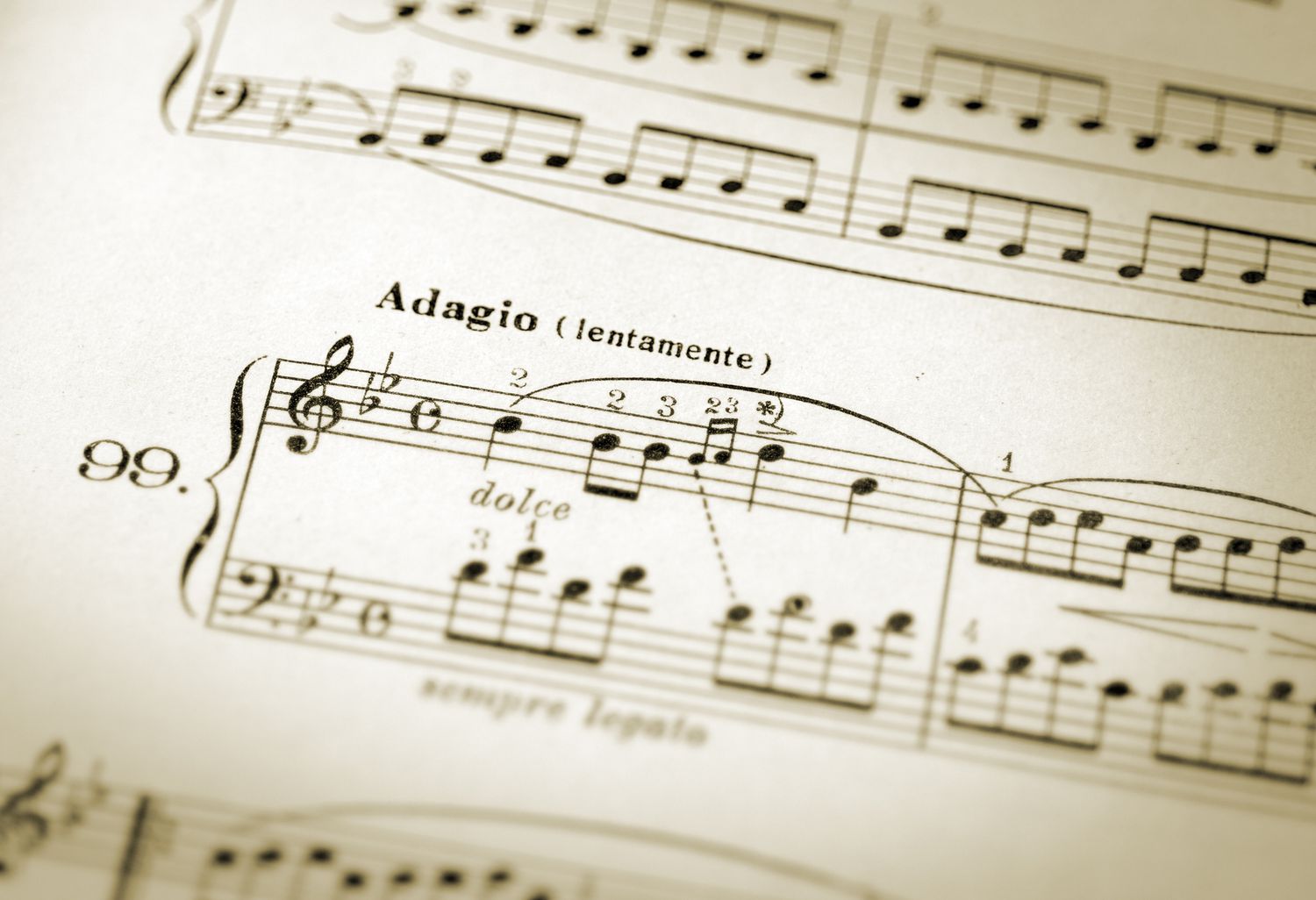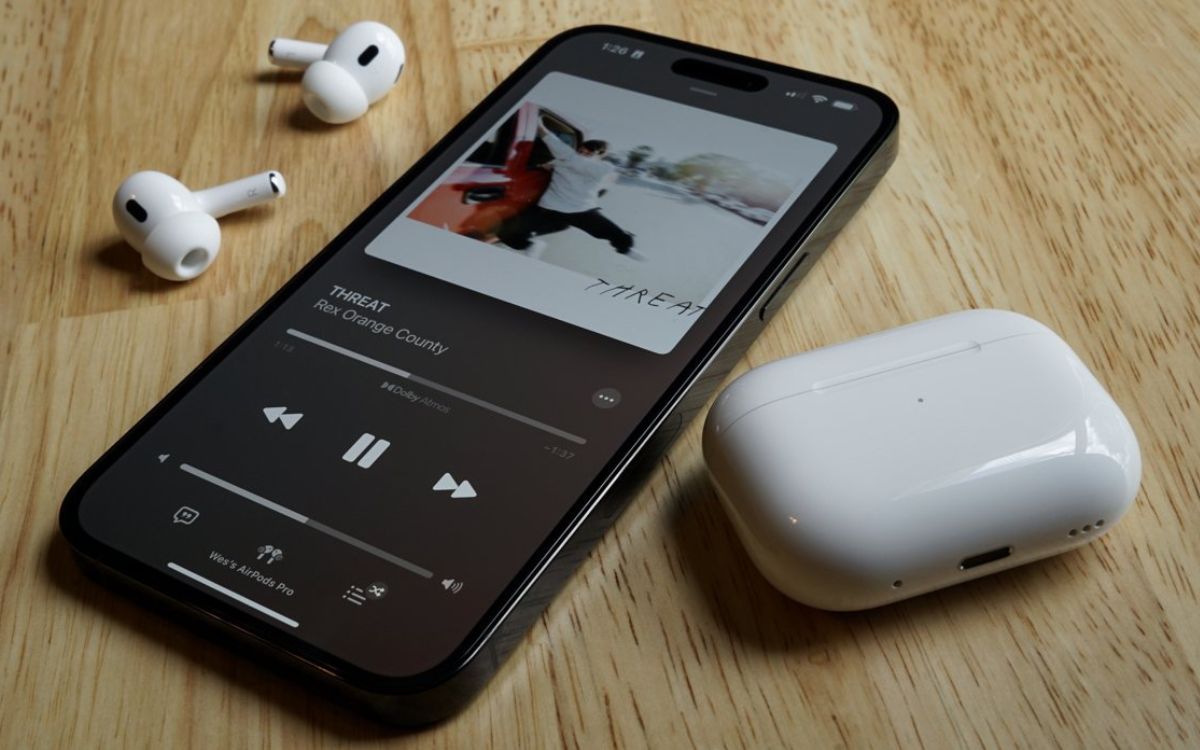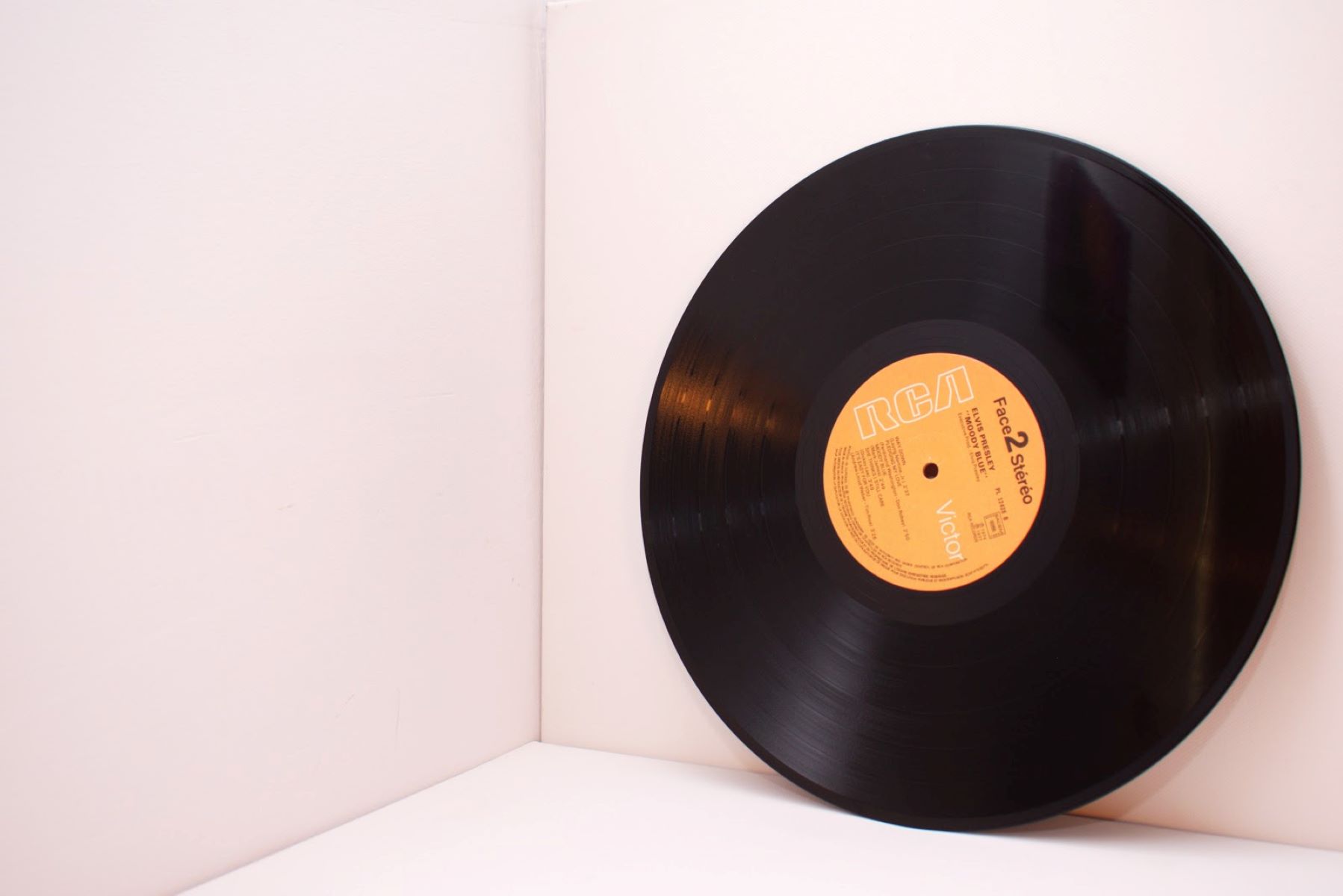Home>Production & Technology>Metronome>How To Find Metronome Of A Song


Metronome
How To Find Metronome Of A Song
Modified: January 22, 2024
Learn how to find the metronome of a song with our step-by-step guide. Discover the importance of a metronome in improving your musical timing and accuracy.
(Many of the links in this article redirect to a specific reviewed product. Your purchase of these products through affiliate links helps to generate commission for AudioLover.com, at no extra cost. Learn more)
Table of Contents
Introduction
Welcome to the world of music, where rhythm and tempo take center stage. Whether you’re a seasoned musician or an aspiring artist, understanding and finding the metronome of a song is essential to creating a tight and cohesive performance. A metronome is a device or tool that produces regular beats at a specified tempo, helping musicians maintain a consistent timing throughout a piece of music. It acts as a musical guide, keeping everyone in sync and ensuring a smooth and polished performance.
So, how do you find the metronome of a song? In this article, we’ll explore various methods and techniques that can help you uncover the tempo of any song, be it a popular hit or an original composition. From listening attentively to the song to utilizing metronome apps and tapping out the tempo yourself, we’ll guide you every step of the way.
Whether you’re practicing alone, jamming with a band, or preparing for a live performance, finding the metronome of a song is crucial to achieving precision and musicality. It not only helps with timing and rhythm but also allows for better synchronization with other musicians or accompaniment.
So, let’s dive in and unlock the secrets of finding the metronome of a song!
Understanding the Basics of a Metronome
Before we delve into the intricacies of finding the metronome of a song, let’s first understand the fundamentals of a metronome. A metronome is a device or tool that produces regular beats at a specific tempo. It is used by musicians to maintain a steady rhythm and tempo while practicing or performing.
At its core, a metronome consists of a pendulum or an electronic mechanism that produces an audible click or sound at a constant interval. This interval is determined by the tempo setting on the metronome. The tempo is typically measured in beats per minute (BPM), which indicates the number of beats occurring within a minute.
Most metronomes offer a wide range of tempo settings, allowing musicians to choose a suitable tempo for their practice or performance. The tempo of a song can vary greatly depending on the musical genre, style, and mood. For example, a fast-paced rock song may have a tempo of around 160-180 BPM, while a slow and soothing ballad might range between 60-80 BPM.
Understanding the basics of a metronome is essential when it comes to using it effectively. It’s important to not only be familiar with the various features and settings available on a metronome but also to have a strong grasp of rhythm and timing. Developing a sense of internal pulse and synchronization with the metronome is key to improving your overall musicality.
Now that we have a solid foundation of what a metronome is and how it works, let’s explore different methods and techniques to find the metronome of a song in the upcoming sections.
Listening to the Song
One of the most basic and effective ways to find the metronome of a song is simply by listening to it. Your ears can be excellent tools for deciphering the tempo, provided you train yourself to focus on the rhythmic elements of the music.
Start by selecting the song you want to work with. Find a quiet and distraction-free environment where you can fully concentrate on the music. Put on a pair of good-quality headphones or play the song on speakers that accurately reproduce the audio.
As you listen to the song, pay close attention to the underlying beat. Try to identify a repeating pattern or pulse that drives the music forward. Focus on the rhythm section, particularly the drums, as they often provide a clear indication of the tempo. Listen for the consistent placement of the snare drum or the consistent bass drum hits.
You can physically tap your foot or move your body along with the beat to get a better sense of the tempo. This can help you internalize the rhythm and feel the timing more intuitively.
If you’re struggling to find the metronome of the song by ear alone, try counting along with the music. Use a metronome to count the beats per minute and see if any of the settings match the tempo you perceive. Adjust the metronome gradually until you find a setting that aligns with the song.
Listening to the song and honing your ear for rhythm and tempo will not only help you find the metronome but also enhance your overall musical perception. It’s a valuable skill worth developing, as it will greatly aid your performance and collaboration with other musicians.
Next, let’s explore another method that can assist in finding the metronome of a song – Tempo Indicators in Sheet Music.
Tempo Indicators in Sheet Music
When it comes to finding the metronome of a song, consulting sheet music can be a valuable resource. Tempo indicators are often included in sheet music to provide guidance on the desired speed or tempo of the piece.
Sheet music typically contains tempo markings written in Italian, such as “Allegro” (fast), “Andante” (moderate), or “Largo” (slow). These markings give a general indication of the tempo but may not provide precise BPM values.
However, some sheet music incorporates specific metronome markings, indicating the beats per minute for a section or the entire piece. These markings can be in the form of a BPM number written above the staff or a note symbol followed by a BPM value.
When using sheet music to find the metronome of a song, locate any tempo markings or metronome indications within the score. Take note of the BPM values or the descriptive terms to get an idea of the intended tempo.
If you’re working with sheet music that lacks explicit tempo markings, you can still infer the approximate tempo by analyzing the note values and time signature. For example, if the music contains mostly quarter notes and the time signature is 4/4, you can assume a moderate tempo. If the sheet music is abundant with eighth notes or faster note values, it suggests a faster tempo.
Keep in mind that sheet music tempo indications are not always accurate or universally consistent. Different editions or interpretations may have slight variations in tempo markings. It’s always best to use them as a starting point and rely on your intuition and musical instincts to adjust to the most suitable metronome setting.
In the next section, we will explore the use of metronome apps and online tools to help you find the metronome of a song with ease.
Using a Metronome App or Online Tool
In today’s digital age, technology offers a wide range of resources to assist musicians in finding the metronome of a song. Metronome apps and online tools are convenient and accessible options for accurately determining the tempo and practicing with precision.
There are countless metronome apps available for smartphones and tablets, catering to different platforms and operating systems. These apps provide a customizable metronome experience, with options to adjust the tempo, time signatures, and even choose different sounds for the metronome clicks.
To use a metronome app, simply search for “metronome” in your device’s app store, choose a reliable and highly-rated app, and download it to your device. Open the app, set the desired tempo, and start playing or practicing along with the metronome beats.
Online metronome tools are also widely available on the internet. These tools can be accessed through a web browser, eliminating the need for downloading additional software. Simply search for “online metronome” in a search engine, and you’ll find various websites offering free metronome utilities.
Online metronome tools often provide additional features such as different click sounds, visual indicators, and the ability to save and access tempo settings across multiple devices. They are a convenient option for musicians who prefer not to clutter their device with additional apps.
Both metronome apps and online tools offer the advantage of portability, allowing you to carry a metronome wherever you go. They are perfect for practice sessions, rehearsals, and impromptu jam sessions. Additionally, they provide a consistent and reliable tempo reference, ensuring that you stay in time and maintain a steady rhythm.
While metronome apps and online tools are useful and versatile, it’s important to choose ones that are well-designed, have positive user reviews, and suit your specific needs. Experiment with different apps or tools to find the one that works best for you.
In the next section, we will explore how to adjust the metronome settings to match the tempo of a song.
Adjusting the Metronome Settings
Once you have a general idea of the tempo of a song, whether through listening, sheet music, or other methods, it’s time to adjust the settings on your metronome to match that tempo accurately.
Metronomes usually have a dial, buttons, or a digital interface that allows you to adjust the tempo. Some metronomes also offer options to set time signatures and subdivision patterns for more complex rhythms.
To adjust the metronome settings, start by identifying the BPM (beats per minute) value that corresponds to the desired tempo. If you know the specific BPM, input it directly into the metronome. If you have a rough estimate, set the metronome to a tempo that feels close and make fine adjustments until you find the right match.
Most metronomes provide a visual indicator, such as a moving pendulum or flashing lights, to visually represent the tempo. This can be helpful for getting a visual sense of the beat and its regularity.
Furthermore, if your piece of music has a complex rhythm or time signature, adjust the metronome to reflect these patterns accurately. Set the metronome to the appropriate subdivision, such as eighth notes or triplets, to ensure that you stay in time with the intricate rhythmical elements of the song.
Remember to start practicing at a slower tempo and gradually increase the speed as you build familiarity and confidence. This incremental approach allows you to master the song and maintain precision at faster tempos.
Make use of the different sounds or click options available on your metronome to find the one that suits your preference and complements the music you’re playing. Some metronomes even offer sounds that mimic different types of musical instruments, which can enhance your practice experience.
By adjusting the metronome settings to match the tempo of the song, you provide yourself with a reliable and consistent reference point to develop your timing and sense of rhythm.
In the next section, we will discuss an alternative method to find the metronome of a song – tapping the tempo yourself.
Tapping the Tempo Yourself
Sometimes, finding the metronome of a song can be as simple as tapping the tempo yourself. This method allows you to rely on your own sense of rhythm and timing, making it a versatile technique that can be used in various situations.
To tap the tempo, start by listening to the song and getting a feel for its pulse and rhythm. As you tap along, try to establish a steady and consistent beat that aligns with the music.
You can tap your foot, use your fingers to tap on a surface, or even clap your hands to mark the beat. This physical engagement helps you connect with the rhythm on a deeper level and allows you to internalize the tempo of the song.
While tapping, pay attention to the speed and intensity of each tap. Is it faster or slower? Is it soft or strong? These cues can provide valuable insights into the tempo of the song.
Once you’ve established a consistent tapping tempo, you can use a metronome to match that tempo. Set the metronome to the closest BPM value that matches your tapping. Listen to the metronome click alongside your taps and make any necessary adjustments until they are in perfect sync.
If you don’t have a metronome on hand, you can also use an online metronome tool or a metronome app on your smartphone. These resources allow you to input the tempo by tapping on the screen or using the device’s microphone to detect your taps.
Tapping the tempo yourself is not only a practical method but also a valuable skill to develop as a musician. It enhances your sense of rhythm, improves your internal pulse, and trains your ability to stay in time with the music.
Next, we will explore an innovative approach to find the metronome of a song – utilizing music recognition apps.
Utilizing Music Recognition Apps
In the digital age, music recognition apps have become increasingly popular and advanced. These apps can help you find the metronome of a song by analyzing its tempo and providing accurate BPM information.
Music recognition apps work by utilizing advanced algorithms to analyze the audio waveform of a song and identify its various characteristics, including tempo. They can detect the beats per minute and provide you with an exact or approximate BPM value.
To utilize a music recognition app, simply open the app on your smartphone or tablet and allow it to access your device’s microphone. Play the song you want to analyze, and the app will listen and analyze the audio to determine its tempo.
Music recognition apps can provide not only the BPM value but also additional details such as the song title, artist, and album. This makes them convenient for identifying the tempo of any song, whether it’s well-known or more obscure.
Keep in mind that music recognition apps may have varying degrees of accuracy depending on the complexity of the music and the quality of the audio. Very busy and highly layered songs may present challenges for the app to accurately determine the tempo.
However, for most mainstream songs and recordings, music recognition apps can provide a reliable estimation of the tempo. Use the BPM information given by the app to set your metronome or adjust your tapping tempo accordingly.
It’s important to note that there are numerous music recognition apps available, each with its own unique features and capabilities. Some popular options include Shazam, SoundHound, and Musixmatch. Explore different apps to find the one that best suits your needs and delivers accurate results.
With the help of music recognition apps, you can quickly and effortlessly find the metronome of any song, allowing you to practice or perform with precision and confidence.
Next, we will discuss the importance of seeking professional help or advice when it comes to finding the metronome of a song.
Seeking Professional Help or Advice
While there are various methods and tools to find the metronome of a song, sometimes seeking professional help or advice can provide valuable insights and guidance. Music educators, instructors, or experienced musicians can offer their expertise to assist you in determining the correct tempo and using a metronome effectively.
If you’re taking music lessons or classes, don’t hesitate to ask your teacher for assistance in finding the metronome of a song. They can listen to the music alongside you, provide feedback, and suggest the most appropriate tempo for your practice and performance.
Music teachers can also offer valuable insights into interpreting tempo markings in sheet music, understanding complex rhythms, and utilizing metronome techniques to enhance your playing.
Additionally, seeking advice from more experienced musicians or fellow performers can be immensely helpful. They might have encountered similar songs or genres and can share their knowledge and insights on finding the ideal metronome setting.
Online forums, music communities, and social media groups dedicated to music can also provide a platform for sharing and seeking advice on various musical topics, including finding the metronome of a song. Engaging with these communities can broaden your perspective and help you discover tips and tricks from others who have faced similar challenges.
Remember, seeking professional help or advice should not be seen as a sign of weakness. Rather, it demonstrates your commitment to improving your musical skills and understanding. Embrace the opportunity to learn from those who have expertise in the field, and use their guidance to enhance your practice sessions and performances.
Finally, it’s important to trust your own musical instincts and develop a sense of confidence in your abilities. While external advice can provide valuable assistance, your own intuition and understanding of the music should guide your decisions in finding the metronome of a song.
As we wrap up this article, let’s summarize the key points we’ve covered on how to find the metronome of a song.
Conclusion
Mastering the art of finding the metronome of a song is a crucial skill for any musician. Whether you’re a beginner or a seasoned performer, understanding the tempo and using a metronome effectively can greatly enhance your musicality and precision.
Throughout this article, we explored various methods and techniques to uncover the metronome of a song. We started by emphasizing the importance of listening to the song attentively, tapping into the rhythmic elements and establishing a connection with the beat.
Sheet music proved to be a valuable resource, providing tempo indicators and precise metronome markings. By analyzing the sheet music, we can gain insights into the desired speed and adjust the metronome accordingly.
Metronome apps and online tools offer convenience and portability, allowing us to carry a metronome wherever we go. These digital resources ensure accurate tempo references and customizable settings to suit our practice needs.
We also explored the alternative method of tapping the tempo ourselves, relying on our own sense of rhythm and timing. This approach fosters a deeper connection with the music and helps internalize the tempo.
Furthermore, music recognition apps proved to be valuable tools, providing precise BPM values and assisting in identifying the tempo of any song within seconds.
Lastly, we emphasized the importance of seeking professional help or advice. Music educators, instructors, and experienced musicians can offer guidance, share their expertise, and provide valuable insights to enhance our understanding of tempo and the effective use of a metronome.
By incorporating these methods and resources into our musical practice, we can find the metronome of any song with accuracy and ease. It’s a journey that requires patience, active listening, and experimentation, but the rewards are immeasurable.
So, as you embark on your musical journey, remember that the metronome is your faithful companion, keeping you in sync and guiding you towards impeccable timing and rhythm. Embrace this invaluable tool, explore different techniques, and let the metronome become an integral part of your musical expression.











